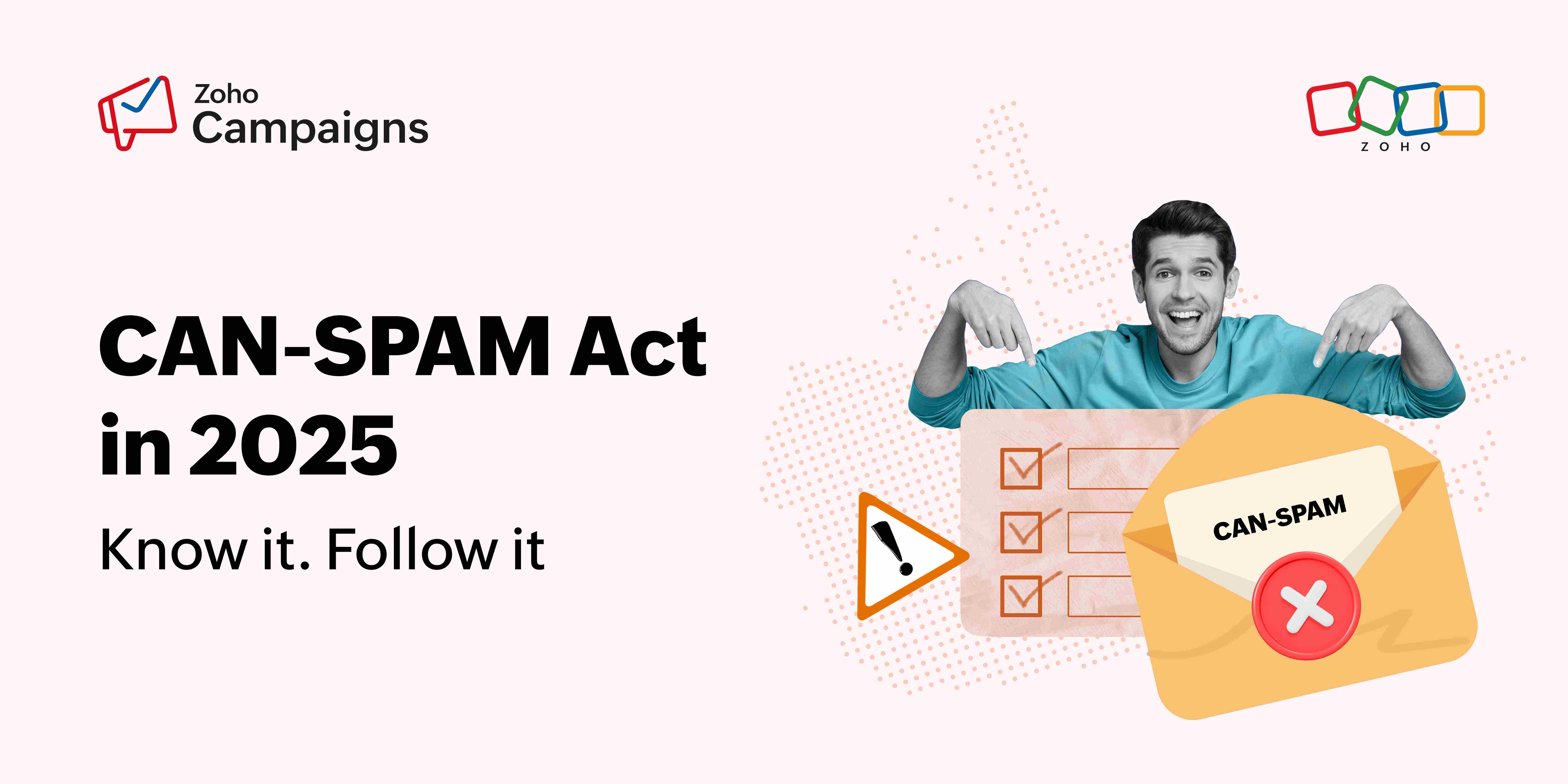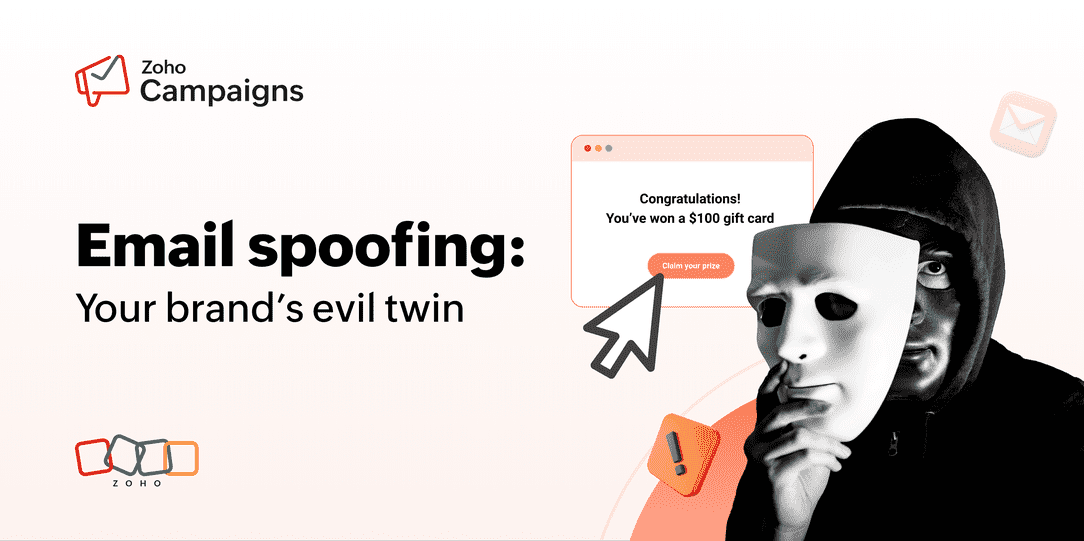- HOME
- Email Marketing
- Using emojis in marketing for a global audience: The Do's and Don'ts
Using emojis in marketing for a global audience: The Do's and Don'ts
- Last Updated : March 12, 2024
- 984 Views
- 5 Min Read

Emojis. These colorful little icons have quietly taken over our everyday language. Love them or hate them, emojis are everywhere. They've conquered our text messages, dominated social media, and now they're ruling the roost in your inbox.
But as we sprinkle our emails and social media posts with sparkles, smileys, rockets, and clapping hands, it's worth pausing to ask: Are we speaking our customers' language, or are we just cluttering up their inboxes with spammy, indecipherable symbols? Can these expressive icons actually be an effective tool in email marketing?
The Good 😊 and the bad 👎
Believe it or not, emojis can dramatically increase engagement. A study by WordStream suggests that using an emoji in a tweet can increase engagement by 25% compared to messages without emojis, while a study by Adobe found that 73% of people believe adding emojis makes them seem cooler, friendlier, and funnier.
Emojis make our messages more relatable and can convey tone in a way that words alone might not. Simply put, they humanize brands. And let's face it: they're just plain fun.
Points to remember:
- Always prioritize clarity and professionalism over "cuteness".
- When in doubt, leave them out.
- A/B test and refine your approach.
But before you start peppering your next promotional email with every emoji under the sun, consider this: Not all emojis are created equal. Their meanings can vary wildly across different cultures and demographics. What's considered a positive gesture in one country can be offensive in another.
For example, the thumbs-up emoji (👍), a universal sign of approval in many Western cultures, is considered rude in parts of the Middle East. Really! Now you know why this section's heading has a thumbs down but not a thumbs up. 😁
Taking cultural context into account
Emojis are a language of their own, but like any language, they're subject to regional dialects. The key to using emojis effectively in marketing is understanding your audience. Are they likely to interpret your choice of emoji in the way you intend? This requires a bit of research and cultural sensitivity, especially for brands with a global reach.
Emojis that have different meanings according to different cultures
👍 (Thumbs up): In many Western cultures, this emoji signifies approval or agreement. However, in some Middle Eastern and Asian cultures, it can be seen as an offensive gesture.
🤙 (Call me hand): In Western cultures, this emoji is often used to convey a casual greeting or farewell. However, in some Asian cultures, it can be interpreted as a rude or dismissive gesture.
🖐️ (Raised hand): In Western cultures, this emoji may indicate a desire to speak or ask a question. In some African cultures, however, it can be perceived as a symbol of stop or halt.
👌 (OK hand sign): While widely used in Western cultures to indicate agreement or approval, this emoji has been associated with various meanings in different contexts, including a symbol of white supremacy in certain circles.
🙏 (Pressed hands): In Western cultures, this emoji is often used to convey gratitude or to ask for a favor. In some Eastern cultures, particularly in Japan and Korea, it can signify a gesture of apology or a sense of gratitude, but in other cultures, it may represent a religious or spiritual act.
Did you know?
A Canadian farmer was fined CA$82,000 by a Canadian court for misinterpreting a thumbs-up emoji as confirmation of a contract! So tread with caution while using emojis in your marketing emails.
Where to use emojis in marketing
Emails and social media are the prime real estate for emojis. They can make your subject lines stand out in a crowded inbox. However, context is crucial. A 😂 might be perfect for a casual brand with a young audience, but less so for a law firm.
A pizza chain promoting a weekend special might say, "Get ready for the weekend! 🍕 50% off all large pizzas 🎉", whereas a travel agency offering holiday deals might go with, "Ready for your next adventure? ✈️🌍 Exclusive travel deals inside!"
Emojis are generally a GO in these email marketing scenarios:
- Subject lines: A single, relevant emoji can grab attention and improve open rates, especially with younger audiences. ("New Deal Alert! 🚨" )
- Casual brand voice: If your brand has a playful and informal voice, carefully selected emojis can enhance its personality. ("We're so excited to share this news 📣🎉")
- Promotional emails: Emojis can highlight specific deals or discounts in a visually appealing way. ("Get 20% off with code SUMMER 💰🎁🔖")
- Engagement emails: Well-placed emojis can add a touch of warmth and friendliness to encourage responses. ("We miss you! 😢 Come back soon")
Avoid emojis in these email marketing scenarios:
- Formal communication: In emails to clients or unfamiliar audiences, avoid emojis altogether to maintain a professional tone.
- International audiences: When targeting a global audience, the risk of misinterpretation is high. Stick to clear, written communication to avoid confusion.
- Legal disclaimers or important information: Don't use emojis near critical information like legal disclaimers or terms and conditions. It can distract from their seriousness.
Culturally acceptable emojis for email marketing:
- 🚀 (Rocket) - Ideal for product launches or significant updates.
- ✨ (Sparkles) - Use to highlight special offers and features, or to add excitement.
- 🎁 (Gift) - Great for promotions, special deals, or giveaways.
- ⏰ (Alarm clock) - Effective for time-sensitive offers or reminders.
- 📅 (Calendar) - Suitable for event announcements or reminders.
- 💼 (Briefcase) - Works well for B2B communications or professional services.
- 💡 (Light bulb) - Use to introduce new ideas, insights, or inspiration.
- 📈 (Chart increasing) - To showcase growth, success stories, or data highlights.
- 🌟 (Glowing star) - Use to feature top picks, best sellers, or highlight excellence.
- 💌 (Love letter) - For personalized offers or to convey customer appreciation.
- 🔒 (Lock) - To emphasize security, privacy, or exclusive access.
- 👉 (Backhand index finger pointing right) - Use to direct attention, especially towards links or CTAs.
Memes: The wild card of digital marketing
While we're decoding the language of digital communication, let's look at memes, which are essentially the internet's inside jokes. They can be a powerful tool in your marketing arsenal, as they're relatable, shareable, and—when done right—can make your brand go viral (every marketer's dream!)
However, memes come with their own set of challenges. They have a shorter shelf life than emojis; what's hilarious one week can be passé the next. They also require a deep understanding of internet culture, and the line between being "hip" and "trying too hard" is a fine one to walk.
Embrace emojis with caution
As with any marketing strategy, the key to success with emojis and memes is balance. They can be incredibly effective in making your brand feel modern and relatable, but they're not a one-size-fits-all solution. Understanding your audience, staying up to date with digital trends, and using emojis and memes with intention can help your marketing messages stand out for all the right reasons.
Whether you're 😍 for emojis or 🙅, there's no denying their impact on digital communication. Used wisely, they can add a layer of connection and engagement to your marketing efforts that words alone might miss. Staying informed, adaptable, and culturally sensitive is the key to speaking your customers' language.
Try Zoho Campaigns and A/B test your way to the emoji land of marketing success.



